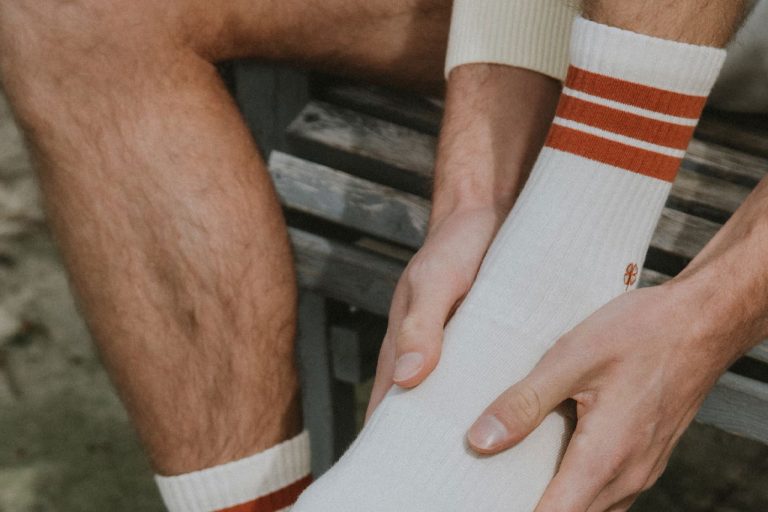
Gone over on your ankle?
August 2, 2022

Ankle sprains are one of the most common sporting injuries.
Sprains are tearing of ligaments, ranging from small tears to full ruptures. Ligaments help in stabilising a joint by connecting bones together. Ankle sprains can take between 2 – 6 weeks to resolve, however severe sprains can take as long as 12 weeks.
Ankle sprains change in their presentation depending on their severity.
You might find that it can be:
- Tender to touch,
- Hard to weight bear or walk on,
- Feel unstable,
- Have a loss of balance.
- Have swelling or bruising to the area.
We advise use of the RICE protocol for the first 24-48hrs and if required, seek medical assistance to determine the extent of the damage.
This involves:
- R est
- I ce. 20 minutes on and at least 10 minutes off before reapplying. Don’t apply ice straight to the skin – this can cause further problems to your skin!
- C ompression. A compression bandage can help minimise the swelling and bleeding to the joint and surrounding tissue.
- E levation – keep the foot and leg elevated to help decrease swelling and minimise pain and discomfort.
Risk factors to ankle sprains range include poor balance and increased joint mobility. However…the greatest risk factor is previous ankle injuries. This is where proper rehabilitation is so important, to help prevent any further injuries.
A structured rehabilitation program should include flexibility, stretching, balance, strength and sport specific exercises. When discussing rehab for ankles, osteopaths concentrate on two different aspects; strength and proprioception.
Strength comprises of working on muscles in the foot, ankle, calf, knee, hip and pelvis. This will allow greater control of the ankle and allow a more powerful muscular stability and contraction. Exercises may be prescribed for you by your osteopath. These may include calf raises or working with a theraband for some resistance training for the muscles and joints.
Proprioception involves knowing where your body is in space, without having to look at it. eg, is your arm by your side or above your head? It allows your body to understand its position. This means if you stand on uneven ground, your body’s innate awareness – through its proprioception mechanism – will be able adjust your footing and positioning so you don’t fall over. This is imperative to your balance and coordination!
Exercises such as balancing on one leg, or writing the alphabet with your big toe, are excellent ways to improve your proprioception.
Osteopathy also assists with treatment. We can treat swelling of the foot, ankle and calf, which may be present, release of any tight muscles and encourage return of ‘normal’ joint range of motion. Our guidance on rehabilitation and treatment will allow you to return to sport, (or normal activities!) in the quickest and safest way, as well as reduce the risk of any reoccurring injuries.
Book online today for expert ankle care.
